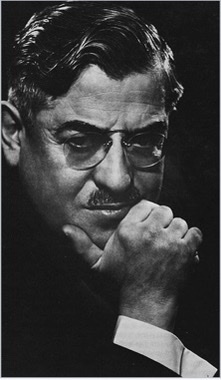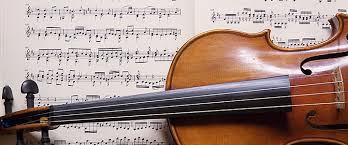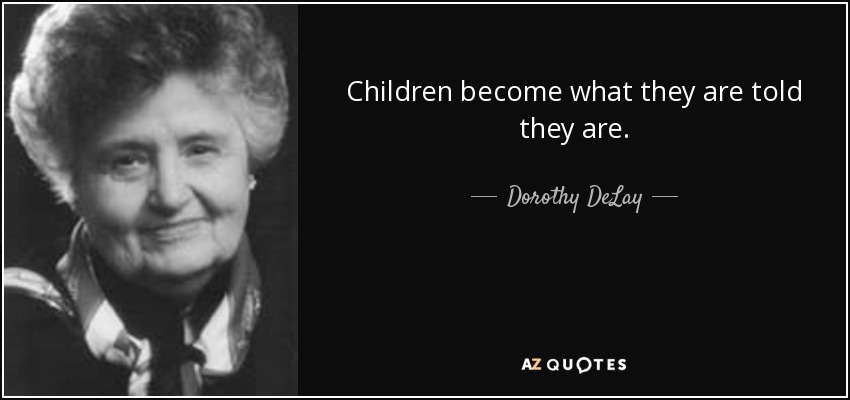
Dounis on Practicing
Dounis on Practicing
Dounis’ philosophy on violin playing and learning has influenced my work as a violinist and teacher. This article, which will be in two parts, focuses on his ideas about practicing. In the first part I outline his general philosophy on the subject and in the second part, which will be posted soon, I share with you some of Dounis’ practical tips on practicing.
Exercise the mind
A core principle of Dounis philosophy on violin learning is that practicing is primarily a mental process and secondarily a physical process. Dounis always insisted that his students should never practice mechanically. Instead, he always encouraged them to think what they want to achieve and how to achieve it. In Constantakos’ book “Demetrios Constantine Dounis: his method in teaching the violin” we read the quote: “Don’t tell me how many times you did it. Just tell me how you learned to do it better. If you don’t feel some improvement after you practice, don’t keep practicing that way forever. Somewhere you are practicing wrong. Get off the treadmill and try a new approach. Your fingers won’t improve until your mental intention improves.”
Joseph Silverstein (a former concertmaster of the Boston Symphony) in an interview with Hans Jensen he described an incident during his first lesson with Dounis that sheds light on Dounis’ conception of effective practicing. “When I played for him the first time, I missed something and he asked me why I missed it. I told him, “Well, I probably didn’t practice it enough.” And he replied: “No, you didn’t practice it correctly. What is the element in that passage which is difficult? Is it a shift? Is it a string crossing? Is it the speed or distribution of the bow? What is it that makes it difficult? Where is the difficulty? Let’s isolate the difficulty and take it out and practice it. You have to be like a good surgeon. When you identify a tumor you don’t just keep operating on the whole body; you just remove the tumor and analyze it to see: “Oh, what is this? Now I know what to do. Now I know what medication I have to use.”
In other words, mechanical practicing doesn’t bring any result; just, fatigue. To eliminate mechanical practicing a violinist needs to listen critically to their playing. This suggests that they should be able to identify incorrect pitch, sound, rhythm and physical restraints. This will help them to spot any deficiencies in their playing and to find possible solutions. Unfortunately, many violinists, when practicing a problematic passage, they tend to repeat it hoping that it will improve by itself. They don’t give the time to understand what the root of the problem might be and decide upon the possible solutions. When a violinist can’t find the solution to a difficult passage, I suggest that they ask their teacher, a colleague or read a book on violin technique. Although reading about technique instead of just practicing is an approach that some violinists might find unusual, it reinforces Dounis’ philosophy that it takes mental strength, commitment and analyzing skills to improve one’s technique on practising. These are characteristics that can only be nurtured through gaining new knowledge and experimentation.
Practice for performance
A common problem among violinists that Dounis observed during his career was the lack of “performance attitude”. Even today, many practice for the sake of it without having the performance of the piece they are practicing in mind. As a result, despite the lengthy practice sessions, they are not really prepared for an actual performance. Dounis’ remedy for this problem was to ask his students to start their practicing by playing a piece from their repertoire in performance mode, even without any warmup. The students had to play this piece from the beginning to the end without any stops for correcting mistakes. Afterwards, they had to remember all the mistakes they made during the performance and work on them. This process requires deep concentration during playing. Thus, this exercise aimed not only to nurture the performance attitude of the violinist but also to help them develop mental alertness.
Exercise the memory as a muscle
Dounis believed that memorizing the music supports effective practicing, because he considered memory to be as a muscle which the violinist should exercise and make it stronger. He always asked his students to memorize their repertoire. The main reason for that was that he wanted his students to free themselves from the music score and focus entirely on the interpretation.
By memorization Dounis didn’t mean just remembering the notes. He wanted the student to memorize every element of the music, from the dynamics to tempo changes to the structure of the composition. Dounis argued that memorization of a piece of music has three dimensions: mechanical, auditory and visual.
The mechanical dimension concerned the memorization of the hand movements, the finger patterns of the left hand and the bow distribution. Often, especially in fast passages, violinists have a vague mental image of our movements, for example, in string crossings. In a fast passage we may have two notes to play in the G string before we move to D string. Then in D string we may have again two notes to play before we move to A string. But then in A string we may have three notes to play before we move to E string. This kind of pattern disruption can be confusing, and we should take the time to clear it in our mind and memorize it. Furthermore, it is very important to memorize the finger patterns (the distance between one finger to the other) that are formed when the left hand plays many notes in a row, for example, in the triplets in bars 25-27, 29-31 and33-36 in first movement of the Mendelssohn concerto. Every group of these triplets forms a certain finger pattern that is created by the tones and semitones. If one memorizes these patterns, they free themselves from having to remember every note individually.
The auditory dimension of memorizing concerns one’s ability to remember how the piece goes and to be able to sing it in its entirety. If we can remember how the piece goes, then we feel freer during playing it on the violin. Finally, visual memorization refers to having photographic memory and it is the ability of the violinist to remember how the music parts look. Dounis, in order to help his students improve their visual memory, he would give them this seemingly time consuming exercise: He would ask them to look at the first four or eight bars of the piece they had to prepare and write them down in the most detail possible. Then they would continue applying this process to the rest of the piece. This exercise made them memorize the music even before they have started practicing it on the violin.
I hope that you enjoyed learning about Dounis’ ideas on practicing. In the next blog I share some of Dounis’ more practical tips on practicing.



